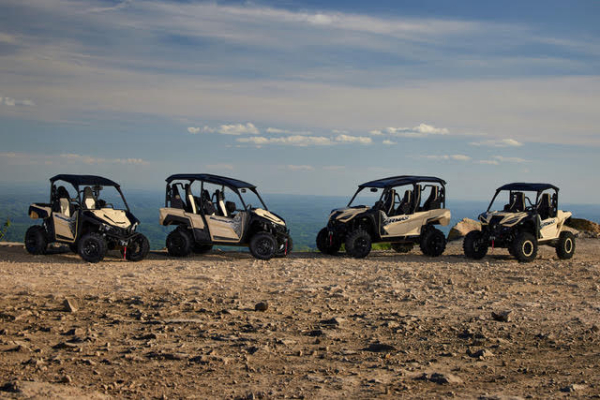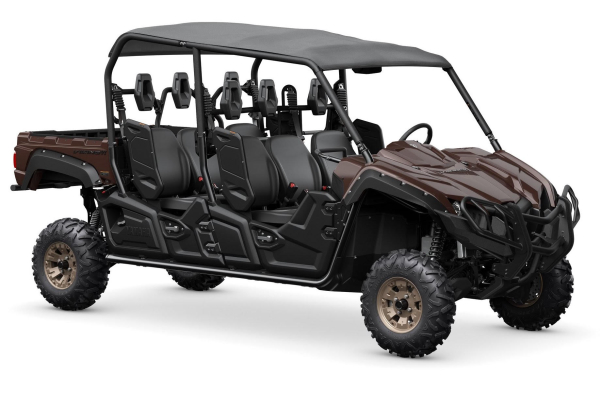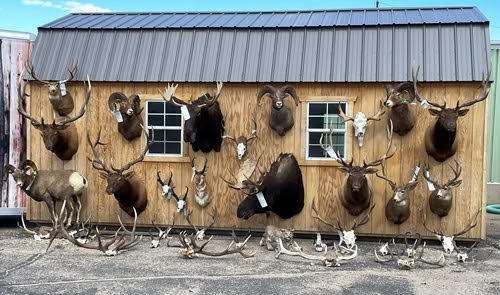Going Long
Length makes bullets heavy. And deadly. Does a pointed nose help or hinder?
When they caught up with the injured elephant, a right and a left from the client’s .600 double—7,500 foot-pounds each—had no effect. Quickly he reloaded, sent two more 900-grain bullets, then another pair, all into the head. By then, the fusillade had severely punished both elephant and hunter. Neither was yet prostrate when the professional hunter triggered his .450 No. 2. The elephant collapsed just four steps away.The .600’s solids had flattened on bone and stopped shy of the vitals. These days, high-velocity bullets that disintegrate on moose, elk, even deer before penetrating yield the same unsatisfactory result. A hunting bullet has two tasks: to hit and to kill. Target bullets need only hit. Since rifled barrels appeared in the 16th century, accuracy standards have tightened. Shooters expect ever-smaller groups on paper, and hits at greater distance. But for stopping elephants—or tumbling deer or elk—good accuracy is often just hitting a melon as far as you can throw it. Bullets that fly flat and nip tight knots far away gain you nothing in cover. They may even cost you kills. During the 1830s, when percussion ignition began to replace flint and short, big-bore plains rifles edged out the elegant Kentucky beyond the Missouri, conical bullets became attractive for their ballistic properties. But these “picket” balls were difficult to load and sensitive to loading technique. Alvin Clark invented the false muzzle in 1840, enabling competitive riflemen to start bullets square with the bore. On the prairie and beyond, hunters stayed with the more forgiving, and available, patched ball, famously in rifles by Jacob and Samuel Hawken. Francis Parkman, a B&C Honorary Life Member and Harvard Law graduate who traversed the West at age 23 and published The California and Oregon Trail in 1840, told of killing a pronghorn with a Hawken at 204 paces. He saw another hunter drop a bison at nearly 300. Long shots indeed! In 1849, a basic Hawken rifle cost $22.50. On the other side of the world, hunters were hurling heavier balls to kill beasts much bigger than bison. After the Dutch settled the Cape of Good Hope in the mid-17th century, explorers venturing into the African interior carried ponderous rifles. A 4-bore launching a 4-ounce (1,750-gr.) silk-patched bullet in front of 16 drams (437 gr.) black powder served Sir Samuel Baker, who commissioned it from George Gibbs in 1840, when Baker was 19. It had a 36-inch barrel with 2-groove rifling and weighed 21 pounds. In 1869 Baker ordered a 3-bore from Holland & Holland. It fired a 5-ounce (2,187 gr.) bullet. Baker died in 1893, age 72. His well-publicized exploits helped Harris Holland and his nephew Henry grow Holland & Holland, the gun-shop that Harris, a tobacconist, had established in 1837. The ivory trade fueled demand for lighter but still deadly rifles. Velocity limits imposed by black powder and lead bullets—and barrel steels of the day—put those two requisites at odds. To kill big beasts, hunters had to send balls the size of voles. Elephant hunter William Finaughty peddled his rifle following an 11-year career that ended in 1875. After it had changed hands three times, the fourth owner added a 3-pound weight to keep the muzzle down in recoil. Seeking more effective ammunition for its troops in 1854, the British government contracted with Joseph Whitworth and funded a 500-yard range for his experiments with bullets and spin rates. Standard rifling twist in military rifles (for patched balls) was one turn in 78 inches. Whitworth found a better spin for short conical bullets was 1-in-20. Skeptics thought this relatively sharp pitch would retard bullets, but those of Whitworth’s design flew flatter than, and doubled the penetration of patched balls. At distance they punched groups a sixth the size of those possible with balls! Whitworth inspired William Greener’s narrow-land rifling, pitched 1-in-30. It stabilized bullets to 2,000 yards. In 1856, gunmaker James Purdey used Greener-style barrels on his brilliantly named Express Train rifles. This nod to speed and implacable blunt force would bless a host of British hunting cartridges. Breech-loading mechanisms eliminated the need for an accurate bullet that could be loaded from the front. Bullets inserted from the rear could be made harder and longer and cast to full groove diameter. Hard bullets could be stabilized with shallower grooves and thus driven faster. In the American West, as in Africa, powerful hinged-breech, rolling- and dropping-block rifles took full advantage. Buffalo hunter Frank Mayer favored Sharps rifles, primarily a .40-90 for which he’d paid a staggering $125. “It had a 32-inch barrel, weighed 11 pounds. On it I mounted a full-length one-inch tube [20x] telescope….” That rifle and another like it were made for 370-grain bullets. Mayer later switched to a 420-grain load, which gave superior results on long pokes. Smokeless powder didn’t turn hunters from the long blunt bullets popular in breech-loading rifles. Straight shanks and short, round noses packed great mass into any given length. Mass meant momentum. While speed trumped it in calculations of bullet energy and yielded flatter arcs, “fast” was relative. Mass, diameter and penetration figured heavily in killing power. In African colonies, the British came to think velocity of around 2,150 feet per second (fps) ideal for big-bore loads. Almost all double-rifle rounds developed in England during the first quarter of the 20th century hewed close to that mark. So did military loads for most of the industrialized world. Hunting bullets from the U.S. and central Europe followed suit. The 6.5×54 Mannlicher-Schoenauer chambered in 1903 Mannlicher rifles earned plaudits as a big-game cartridge worldwide. Ivory hunters liked it because its mild report didn’t spook herds, and its 160-grain solids drove through elephant skulls. Charles Sheldon used it in Alaska for sheep, moose and bears. The great African explorer F.C. Selous brought his 6.5×54 to hunt in North America’s Rockies. Loaded stateside until 1940, the 6.5×54 is still on Norma’s roster, 156-grain softpoints clocking 2,460 fps. It’s a ballistic match to the 6.5×55 Swedish, designed for the 1894 Swedish Mauser. As 6.5×54 M-S carbines have gone the way of pterodactyls, the 6.5×55 is now the more common of the two. Norma offers both of these cartridges with its 156-grain Oryx and Hornady’s 160-grain round-nose bullets. Paul Mauser’s 7×57 was developed in 1892 but not introduced until 1893, when it appeared in an improved Mauser rifle. Snapped up by Spain’s government, the “Spanish Mauser” sent 173-grain bullets at nearly 2,300 fps. During the U.S. assault of San Juan Hill in the Spanish-American War, this 7mm load would inflict some 1,400 casualties on the 15,000 troops, dislodging 700 Spaniards. As with the 6.5s, most hunting loads for the 7×57 came to feature pointed, mid-weight bullets. Norma lists the 160-grain Swift A-Frame and its own 170-grain Vulkan. Great Britain’s .303 appeared in 1888, sending 215-grain .311-diameter bullets at 2,150 fps with a compressed charge of black powder. It made the switch to smokeless in 1892, as the U.S. armed its troops with the very similar .30-40 Krag, firing 220-grain .308 bullets. George Rushby, famous for killing man-eating lions in East Africa’s Njombe District, started his career with a well-used .303 he got “for clothing and cash.” F.C. Selous carried a .303 on both his hunting trips to North America and used it extensively in Africa. Old Short Magazine Lee-Enfield rifles remain a staple on farms there. Trailing a cattle-killing leopard once, I was accompanied by the stockman and his battered .303. I felt over-gunned with my .375. Germany broke from traditional bullet design in 1905, a 154-grain spitzer at 2,880 fps, replacing the blunt 226-grain missile at 2,090 in its 7.9×57 cartridge. Bullet diameter was changed too, from .318 to .323 (8mm). Because both the 7.9×57 and later 8×57 have been called the 8mm Mauser, letter designations were added. The early .318 cartridge has a “J” suffix, for “infanterie” (the German J and I interchange); “S” means a .323 bullet. In response, the U.S. ordered up a new cartridge .07 inches shorter than the .30-03’s. With 150-grain bullets at 2,700 fps, it became the .30-06, lethal beyond ranges doughboys could keep bullets on the side of a boxcar. But as artillery fire cratered battlefields farther and farther from the cannon’s mouth, the U.S. Army changed its infantry bullet again, to a 173-grain boat-tail spitzer with a long, 7-caliber ogive (curvature between shank and tip). Issued in 1925, this “M1” bullet clocked 2,647 fps. Its stellar ballistic coefficient carried it 5,500 yards! Oddly enough, the stiff recoil of M1 loads prompted a 1939 shift back to a lighter 152-grain spitzer at 2,805 fps. Given the current fever for long-range shooting, it’s little wonder hunters now adore the likes of the long, heavy M1 bullet the Army once found so enchanting. Such bullets scribe the flattest arcs and best retain speed and energy downrange. Their sleek shape sheds drag. Shorter, lighter bullets launched faster yield their giddy-up to the air resistance imposed by their own velocity. But while heavy, pointed bullets are ballistic champs, they can’t match the sectional density of blunt bullets of the same length. Sectional density (SD) is a number achieved by dividing the bullet’s mass by its cross-sectional area. (SD = M/radius squared x pi). It’s often expressed, even in loading manuals, as mass divided by diameter squared (M/diameter squared). This formula yields a different value; it’s still useful for comparisons because area and diameter squared have a constant relationship. Using diameter squared to calculate SD, you get numbers 78.6 percent of SDs calculated using area. SD is a component of ballistic coefficient but is not itself affected by bullet shape. Let’s get out of the weeds. Blunt bullets have higher SDs than pointed bullets of the same length because nose taper exacts a high cost in weight. The only way to add weight to a pointed bullet is to make it longer. If the blunt bullet is as long as practical, given the rifle’s action, magazine and rifling pitch, adding length isn’t an option. The blunt bullets favored by hunters using the first smokeless cartridges were effective all out of proportion to how they compare ballistically with popular modern loads. Even Elmer Keith, an outspoken proponent of big-bore bullets, had a kind word for 160-grain missiles in the 6.5 bore, “because they have such high sectional density.” Most hunters used iron sights, and ammo was often a precious resource. So shot distances were modest, and bullets landed with a good share of the pop they had at the muzzle. Quick kills resulted. But even today, bullets of high SD have much to recommend them. Reliable upset, for example. “In general, it’s harder to make a pointed bullet expand predictably than it is a blunt softnose,” confided an engineer who acknowledged a market in love with boat-tail spitzers. “Broad lead-noses, with jackets tapered to control upset, are proven winners—especially when impact velocities stay between 2,000 and 2,500 fps. You could expect that terminal speed at ordinary ranges before, say, the 1930s.” (see chart at right). All are round-nose or semi-spitzer in shape. You’ll find few pointed hunting bullets with SDs of .300 or above. A few “long-range” bullets qualify. Hornady’s 212-grain .308 ELD-X has an SD of .319. That of Berger’s 195-grain 7mm EOL Elite is .345. What you want in regards to bullet flight and terminal performance in game depends a great deal on how far you’re willing to send that bullet and the shot angles you’ll accept. For many bores, you have no pointed-bullet option in the top weight range. Choose speed and flat flight or mass and momentum. (see chart at right). Killing bison in America’s frontier West with a .40-90 Sharps, Frank Mayer chose high SD over velocity, shifting to heavy 420-grain bullets with an SD exceeding .330! Given top launch speeds, solid bullets of high SD drive deeper than bullets of low SD. Of course, that prediction holds true with softpoints only if bullet construction is the same. In penetration tests with .375 bullets, a 270-grain Nosler Partition (SD .274) powered 33 inches through water. A 300-grain Sierra (SD .305) went exactly half as far. Is the Sierra less effective? Not necessarily. Only the Partition’s heel reached the furthest point. The 16 ½-inch channel plowed by the Sierra would have destroyed the vitals of most animals on most shots. Another thing to ponder while you’re in a math mood is the stability of bullets after the hit. Ivory hunters favored heavy blunt bullets not just for their penetrating power, but because they stayed on course through tough-going better than pointed bullets. That’s still true—albeit bullets with flat noses drive more reliably straight than either, which is why Woodleigh and Swift solids for heavy game now resemble soup cans more closely than they do rockets. Softpoints, of course, change shape as they penetrate. Bullet stability depends largely on spin imparted by rifling. But the correct spin for stability in air is not adequate to ensure stability in a denser medium. The difference is startling. A 300-grain .375 bullet from 1-in-14 rifling is stabilized at a rate of 2,229 rotations per second (rps) through air. Entering water, it must turn 66,870 rps to maintain stability! Muscles, organs and bones in game aren’t uniform, so ideal spin rate changes constantly as a bullet penetrates. Charitably, bullets become shorter as they expand, reducing the spin rate needed for stability. So does weight loss, albeit losing material also trims momentum. Not good. Eerily, the SD of a fully expanded (but still intact) jacketed softpoint in game closely matches that of a lead ball!
|













